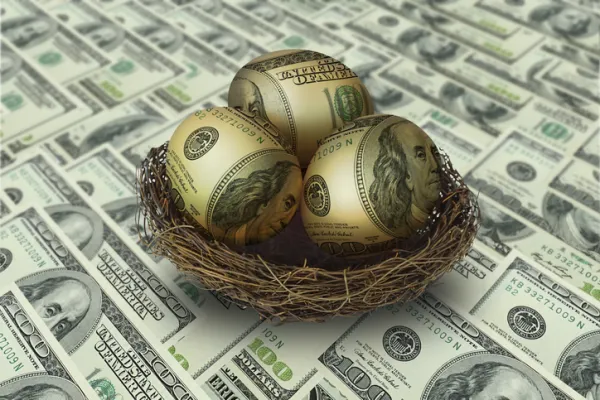One of the investment universe’s more persistent mysteries over the last 12 months has been the subdued showing of the Cboe Global Market’s (Cboe) Volatility Index (VIX). Launched in 1993, the VIX Index is a measure of market anticipations of near-term volatility indicated by S&P 500 Index (SPX) options prices. An elevated VIX is generally regarded as a barometer of expected turmoil in the equity market, which is why it has come to be known as the “fear index.”
Over the last 12 months, however, the VIX Index has failed to live up to its intimidating soubriquet, spending much of the year in single-digit territory, compared with a long-term average of 19. This means that an investor using the VIX Index to take the pulse of market, economic, and political sentiment on Earth would assume these are times of unprecedented serenity.
This perplexes those who point to a cocktail of influences that appear to make the outlook for equities more fragile than it has been for decades. These range from domestic politics in the U.S. to the increasingly fissiparous character of Europe’s so-called union, disquieting sabre-rattling from the Korean peninsula and the White House, uncertainty about the prospects for the Chinese economy, and a tightening of monetary policy worldwide. Throw in the perception of stretched valuations following a 70 percent rise in the S&P 500 over the last four years, lifting the market P/E to 25 times earnings, and it is easy to see why many market observers scratch their heads over the VIX’s stubbornly low level.
Less mystifying than it seems
Russell Rhoads, Director of Product Advancement, Global Derivatives, Cboe Global Markets in Chicago, concedes that he has been surprised by the performance of the VIX Index over the last year. “If you had told me last Halloween that Donald Trump would win the presidency and that the VIX would have been at an average all-time low for the first 10 months of 2017, my response would have been, ‘No way,’” he says.
On reflection, however, Rhoads says that the evolution of the VIX Index since the U.S. presidential election may be less mystifying than it seems. “The president has been scaling back on regulation, with legislative risk largely having been taken out of the stock market. This is good for business, as is the possibility of tax cuts,” he says. “The economic numbers suggest the U.S. is posting healthy growth, and inflation remains low.”
At the same time, says Rhoads, a shortage of compelling opportunities in other asset classes or overseas markets has maintained the competitive appeal of domestic equities. As for the perception that valuations are stretched, he says recent research suggests that high multiples have seldom acted independently as catalysts of bear markets. “The combination of all these factors has resulted in low realized S&P volatility, which in turn has kept the average of the VIX low,” he adds.
Rhoads says he doesn’t expect this will last forever. Although he is relatively relaxed about the threat from North Korea, he identifies the outlook for China’s economy and its monetary policy as a long-term risk for U.S. equities. History suggests that he is right to identify China as a potential disruptor of the VIX Index’s stability. After all, it was China, not Lehman Brothers, Brexit, or the threat of the Fed turning hawkish that spurred the VIX’s most dramatic intra-day spike on record. During a single trading session in February 2007, the VIX surged from 11.15 to 18.31 in a knee-jerk response to concerns over Chinese interest rates. This represented an unprecedented 64 percent rally, which compared with a relatively modest 3.5 percent decline in the SPX the same day.
Implementing volatility strategies
For the time being, however, short volatility strategies have remained especially popular over the last year. “On the short side, we have seen increased use of option spreads that take advantage of the VIX futures being consistently at a premium to spot VIX, but drifting towards the spot level, together with outright purchases of puts whenever there has been a slight spike in volatility,” Rhoads explains.
Increasingly, says Rhoads, volatility trading strategies have been based on VIX Weeklys futures, which were introduced in July 2015. Rhoads explains that the addition of weekly expirations offers volatility exposures that track the VIX Index more precisely than standard monthly expirations.
Long before they were launched in their weekly format, VIX Index futures contracts (introduced in 2004) and options (2006) made long and short hedging strategies accessible to an increasingly broad community of investors. As Rhoads says, attendance at the three annual Risk Management Conferences hosted by Cboe has risen markedly in recent years, with mainstream institutional investors, such as domestic pension funds, attending on a more regular basis.
The rising popularity of volatility hedging strategies among institutional investors, says Rhoads, is one reason why there has been tremendous growth in the volume of VIX options and futures.
In addition, volatility is gaining increasingly widespread acceptance as an asset class in its own right, giving investors exposure to a strategy that generally has a high negative correlation with core equity and fixed income weightings. At a time of high valuations in other asset classes, this provides attractive, uncorrelated diversification opportunities, at an increasingly competitive cost.
“A big function of the costs of hedging is liquidity of the underlying market, and average daily trading volumes are up tremendously this year,” says Rhoads. “But it has been noticeable that when we have seen upticks in volatility, the moves in the tradeable instruments have not been very accentuated, which is a reflection of the huge pool of liquidity available for investors implementing a VIX futures or options strategy.”
Rhoads publishes a regular blog on trading activity in VIX options, highlighting individual trade structures that he regards as innovative or uncommon. The diversity of structures that have caught his eye in recent weeks attests to the range of opportunities open to nimble traders with contrasting risk appetites. Recent examples include a straightforward short position taking advantage of a brief spike in volatility, a conservative bull call spread in which both the gains and potential losses are capped, a long call reducing costs through a multi-leg synthetic structure, and a higher risk short strangle.
Rhoads says that he expects short volatility strategies to remain in vogue over the short term, but he cautions against assuming that single-digit numbers are now the new normal for the VIX index. “Volatility is a mean-reverting asset, and the index will eventually return to its higher long-term average,” says Rhoads. “Nobody can forecast when that will happen, but when it does, there will be a very rapid adjustment, which will probably be driven by a completely unexpected event. This is why people who have taken advantage of this environment to implement short volatility strategies should ensure that they have adequate controls in place.” – Phil Moore






